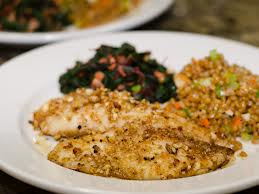 Are carnivores doomed? Red meat has earned a bad reputation in parts of the health community and media but is this a deserved pooh-pooh? What is it about red meat that makes it so bad supposedly?
Are carnivores doomed? Red meat has earned a bad reputation in parts of the health community and media but is this a deserved pooh-pooh? What is it about red meat that makes it so bad supposedly?
Research studies that try to find links between diet and disease have shown a repeated association between the intake of red meat and two major health conditions, heart disease and cancer. In these studies, those people that ate larger amounts of red meat tended to have a higher risk for both conditions.
Regarding heart disease, some of the proposed elements in red meat that are to blame are saturated fat, cholesterol, carnitine, choline, and/or heme iron content. Studies have shown that an increased intake of each of these is related to an increased risk for heart disease; however, current thinking is leaning more heavily on excessive sugars and omega-6 fatty acids as the dietary factor most likely causing heart disease.
There are two proposed explanations for the increased risk for cancer seen among meat-eaters. Meats naturally contain nitrite and nitrate, both of which are believed to be carcinogenic. Heterocyclic amines (HCAs), compounds which are formed on cooked meat and poultry, is the other component that could be to blame. HCAs have been shown to be carcinogenic in animals.
Bottom line: For whatever the reason, eating large amounts of red meat doesn’t appear to be the healthiest thing to do. Most food eaten should be plant foods. Limit your intake of red meats (beef, pork, and lamb) to no more than 18 oz (cooked weight) per week and completely avoid processed meats (ham, bacon, salami, hot dogs, and sausages.) Use the following tips to decrease the HCAs in your meats and poultry:
- Marinate and then remove the marinade mix before cooking the meat and poultry.
- Microwave for about 1 ½ – 2 minutes and pour off the juices before cooking on the grill to decrease the grilling time.
- Try seafood instead of meat or poultry. Seafood won’t have as many HCAs.
- Keep meat and poultry moist. Drier and more well done meats contain more HCAs.
- Bake, roast, or stir fry. These cooking techniques make less HCAs than grilling.
- Flip frequently. Turning meat and poultry over every minute can cut HCAs down by 75-90 percent because the surface temperature stays lower.
- Toss the pan drippings because they can contain more HCAs than the meat or poultry itself.
- Cook in liquid by boiling, steaming, poaching, or stewing. These techniques create no HCAs because the temperature never tops the boiling point of water.
- Eat vegetables which make no, or very few, HCAs




